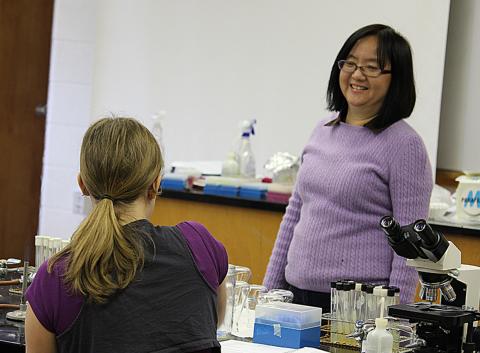Hong Studies Wheat Tolerance for Drought


Despite her first inclination that water availability would be the prime factor in larger yields, Hong’s research pointed to a different variable: wheat variety. She presented her conclusion at the 144th Annual Meeting of the Kansas Academy of Sciences on March 30-31 at Wichita State University.
To begin her study, Hong and students from her genetics class called local farmers in Reno and Rice Counties to collect wheat yields from 2007- 2011. During the drought in 2011, Rice County reported producing 24 percent higher wheat yields than Reno County. The increased yield was thought to be a result of the higher available water capacity of the soil in Rice County. However, when compared to data in 1933-1935, during the Dust Bowl, Reno County had higher wheat production rates despite the lower available water capacity. This suggests that the variety of wheat plays a significant role in drought tolerance.
Hong and her students analyzed the eight varieties of wheat grown in Reno and Rice Counties in 2011. Seven varieties had a 10.58 to 58.29 percent higher yield in Rice County. The eighth variety, Armour, showed no significant difference between the two counties and had the highest yield of all wheat varieties planted. Therefore, Armour proved to be the most drought tolerant during 2011 and in both counties.
“The five years of data we have include a variety of growing conditions: flood, drought, and good seasons,” said Hong. “With more research, we hope to find the best varieties of wheat to grow in each type of season and which wheat varieties grow well in all conditions.”
- Log in to post comments


